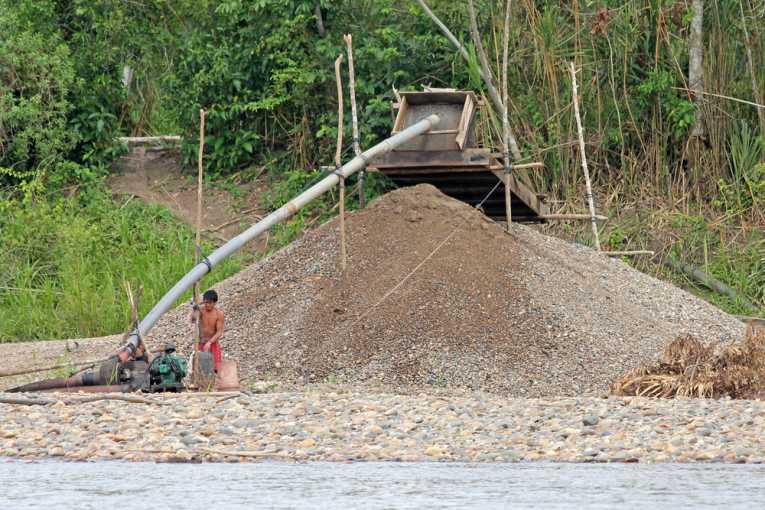Guyana, whose name means 'land of many waters', has implemented a moratorium on the issue of new permits for gold and diamond mining in its rivers.
Foreign companies began large scale industrial river mining in the country, using powerful suction dredges, in the late 1980's.
The gold and diamond mining industries have attracted much international criticism over recent decades due to their environmentally-damaging practices and poor treatment of miners in developing nations.
Waste from gold mining and processing gold ore can include cyanide and mercury as well as other heavy metals. If released directly into local rivers, these kill local wildlife and enter the human food chain.
Tailings, or the semi-solid waste from mines, threaten the environment by making local water sources murky and unfit for human consumption. In 1995, the tailings dam at the Omai mine in Guyana failed, and 3 billion liters of water laced with cyanide flowed into the Omia river, killing all aquatic life there.
Diamond mining in rivers involves dredging and the removal of vegetation, resulting in significant habitat loss for local species. Without vegetation to hold soils and sediments in place, heavy rains wash these valuable resources away into the river system, turning clear water cloudy, deoxygenated and unfavorable for photosynthesis.
Like many developing countries, the health of Guyana's citizens is comparatively poor, due in part to lack of access to clean water and sanitation.
The step to suspend the issue of new permits is a bold one. Guyana is one of the poorest countries in the Western hemisphere. The mining of bauxite and gold contribute 20% of Guyana's GDP. Natural Resources Minister Robert Persaud said that the Government would assess the damage done so far. This includes the destruction of riverbanks, threats to fish species and the blockage of river channels by fallen trees.
The country's geology and mines commission will no longer be issuing permits until further notice.










